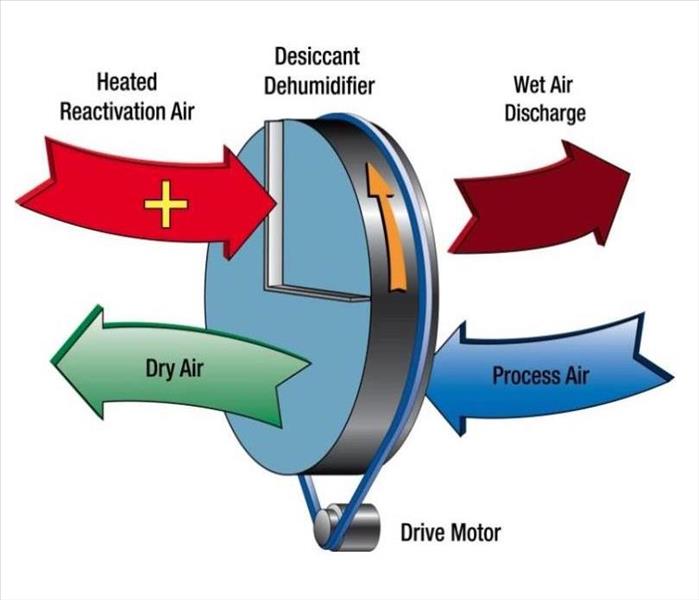Commercial Restoration: How desiccants work
2/10/2021 (Permalink)
Here at SERVPRO of Northwest Portland, our Commercial Large Loss Division handles commercial losses on a regular basis. One of our most important pieces of equipment, a desiccant, can make a huge difference in the restoration timeline when a commercial property has multiple affect rooms, floors, or buildings. To understand how a desiccant works, continue reading below:
Large format desiccant dehumidifiers are a crucial part of commercial large loss restoration because they can provide drying economy and scale. Considering the conditions of a job can help a Project Manager determine the proper equipment needed, such as building size, environmental conditions, accessibility, use, construction, and availability of power.
One of the most important pieces of equipment is the desiccant, which is a large scale dehumidifier. Desiccants operate differently than your average dehumidifier - they use chemicals to create different drying conditions that improve moisture absorption.
As process air enters the dehumidifier, desiccant material (typically silica), which has a high affinity for water, absorbs moisture from the air. To see a diagram of this process, refer to the image attached to this blog.
Air leaving a desiccant dehumidifier is warm, very dry, and has a high velocity. These three essential ingredients are necessary for increased drying rates. Desiccant dehumidifiers can lower the humidity ratio (measured in grains per pound or gpp) much lower than refrigerant dehumidifiers. This dry air produced by the desiccant can be easily ducted to where the drying is needed most in the commercial property, thus creating an efficient drying system.
Inside the desiccant dehumidifier, heated air (called reactivation air) is passed across the desiccant material, causing it to release the water it contains. This moisture-laden air (or wet air discharge) is released outdoors.
Aside from the substantial water removal efficiency of these units, they also operate between zero degrees to 90 degrees Fahrenheit, with best efficiency ranging from 40 degrees to 80 degrees Fahrenheit.
Since desiccants do not rely on the condensation process used by refrigerants, they require no drain. Desiccants simply process the air.
SERVPRO of Northwest Portland has the equipment necessary to handle large commercial restoration projects. Our desiccant is trailer mounted and travels all across the Portland Metro Area, delivering dry air where needed. If you experience a large commercial loss, know that our Commercial Large Loss Division (CLLD) is ready to assist you.

 24/7 Emergency Service
24/7 Emergency Service
